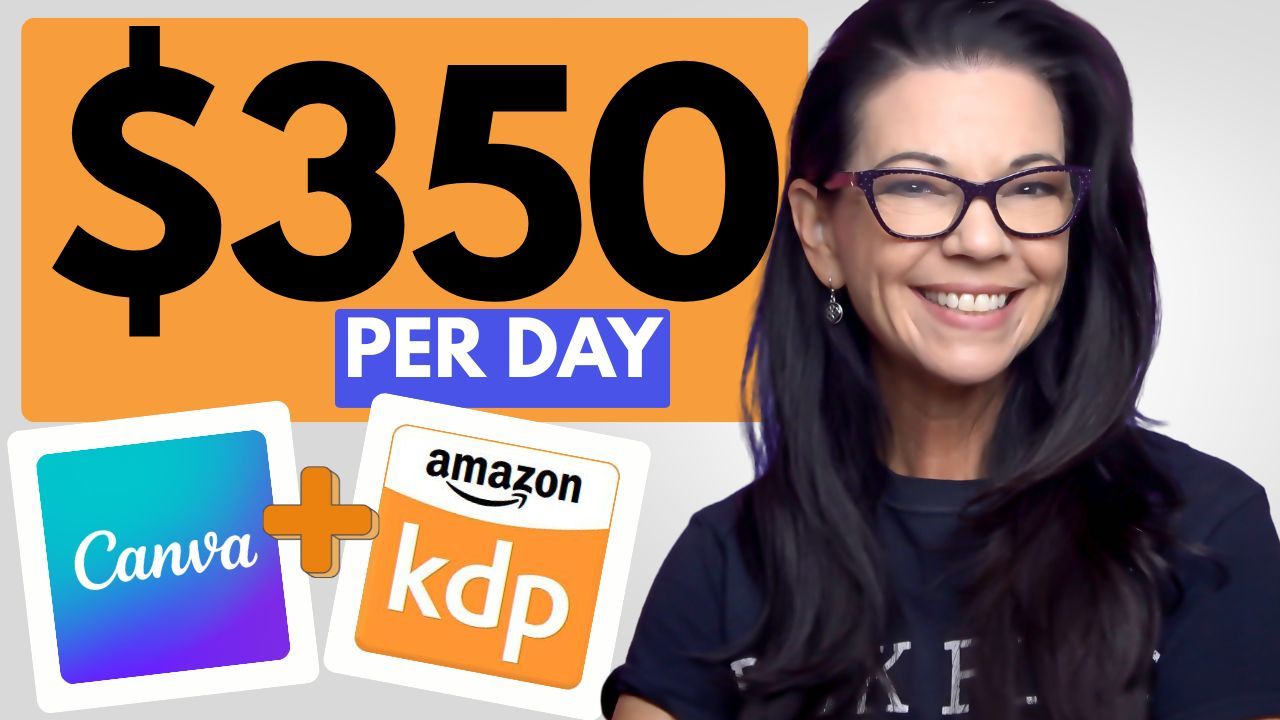The 120-Page Bestseller: How to Design a Profitable, Evergreen 52-Week Journal for KDP
Nov 02, 2025
The Amazon KDP marketplace is competitive, but there's a simple secret to long-term success: evergreen content and low production cost.
Most new authors overcomplicate their books with high page counts and seasonal themes. Today, I'll walk you through the precise blueprint for creating a high-value, non-dated 52-week resolution journal that consistently sells—and how I used tools like Canva and Gemini to go from idea to upload.
🎯 Step 1: Niche Down and Go Evergreen
The New Year Resolution Journal is a powerful niche because it taps into a recurring need for change and self-improvement. The hack? Don't put the year on it.
-
Evergreen Advantage: By omitting the year (e.g., "2026"), the journal becomes a flexible, year-round product. It sells just as well in July for a birthday as it does in January.
-
Hyper-Niche: The audience is clear—someone focused on goal setting and habit building. This allows you to target your cover and keywords precisely.
-
The Holiday Boost: If you launch now, you'll still get a traction boost from the holidays, but your sales won't completely drop off in February.
(P.S. Everything you need from the outline, quotes, and description is easily sourced using AI tools—we'll get to that.)
🔎 Step 2: Research & Competitive Pricing
Before designing, you must understand the competition and set your cost ceiling.
Analyze the Bestsellers
While searching Amazon, you’ll notice that many top sellers in this category are dated for the current or upcoming year. But look closely for the non-dated successes:
-
The Key Differentiator: The successful non-dated journals often focus on a transformational experience (like self-care or gratitude) rather than just a schedule.
-
Bad Reviews = Valuable Data: Note that bad reviews often point to external issues (like shipping damage) rather than content. This tells you the content structure is largely validated.
The Pricing Constraint
My goal was to keep the final price under the $8–$9 mark to remain competitive. This forces two critical design choices:
-
Interior Color: Stick with a black and white interior. Color interiors are beautiful but significantly increase KDP printing costs, crushing your profit margin on low-content books.
-
Trim Size: Choose a portable size like 6x9 inches (instead of 8.5x11). This makes it a perfect bag-friendly companion and slightly lowers print costs.
🎨 Step 3: Design the Theme (Cover First Hack)
Here’s the biggest workflow hack I learned: Start with the cover design and central theme first.
I used to design the interior first and struggle with visual continuity. Starting with the cover forces you to select a theme (e.g., watercolor botanicals, geometric swirls) and identify repeatable design elements (leaves, soft colors, specific fonts) that you can easily integrate into the interior pages.
Canva & KDP Dimensions
-
KDP Calculator: Use the free KDP Cover Calculator to determine the exact spine and bleed dimensions for your 6x9, 120-page book.
-
Canva Custom Size: Create a custom design in Canva using those precise overall dimensions.
-
The Template Trick: Upload the KDP-generated template into Canva and use the transparency tool to ensure your design elements (like the Title, spine text, and barcode zone) are perfectly aligned.
Bleeds for Quality
For a professional look, you need a bleed on the interior. This means images or graphics run off the edge of the page so that when the book is trimmed, there are no unsightly white lines.
⚙️ Step 4: Building the Interior Blueprint
The entire 120-page book is built on just four master page designs—the bulk of which is the repetitive 52-week spread.
The Guided Value-Add
-
Custom Quotes: Don't just use one quote. I had Gemini generate 52 unique short inspirational quotes (one for each week) to make the journal feel personalized and high-effort without adding design time.
-
Mature Icons: Be mindful of your target audience. I avoided "cutesy" elements like hearts and big smiley faces, opting for simpler, more mature habit tracker checkbox designs.
The Page Breakout
| Page Range | Content Type | Content Source |
| P. 5 - P. 108 | 52 Weekly Spreads | Copy/Paste of Plan and Review master pages. |
| P. 109 - P. 112 | Quarterly Check-ins | Quick review of annual goals. |
| P. 113 - P. 114 | Annual Reflection | Guided growth and learning questions. |
📈 Step 5: Optimization & Upload
Quality over Convenience: When uploading, differentiate your file types for optimal quality:
-
Interior: Use PDF Standard for the 120 black-and-white pages. The quality is sufficient, and the file size is manageable.
-
Cover: Always download the full color cover as PDF Print to ensure the highest quality color and resolution.
Listing Optimization Checklist
I used AI to generate the bulk of the copy, but the human touch is in the final edit:
-
Title/Subtitle: Ensure no keyword repetition between the two fields. Use the subtitle to list high-value features (e.g., "Guided," "Consistency," "Non-Dated").
-
Keywords: Utilize all seven keyword fields. Focus on long-tail phrases that reflect your niche: 52 week planner undated, guided progress tracker, simple habit tracking notebook.
-
Category: Select the most specific categories (Self-Help > Goal Setting).
By focusing on a lean, high-value, and evergreen structure, this journal was able to be priced at $6.95 while still making a solid royalty—a perfect price point for a continuous bestseller.

